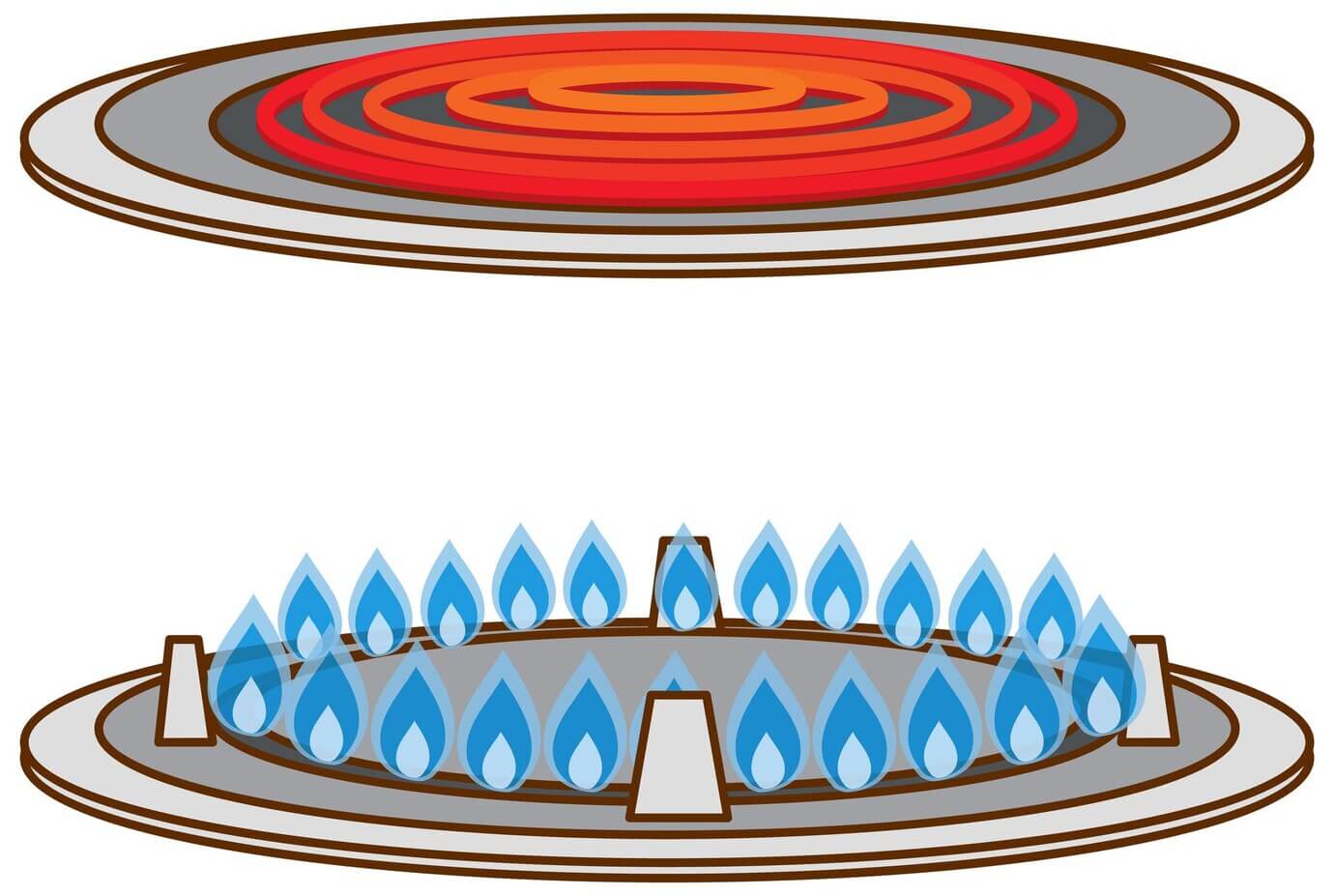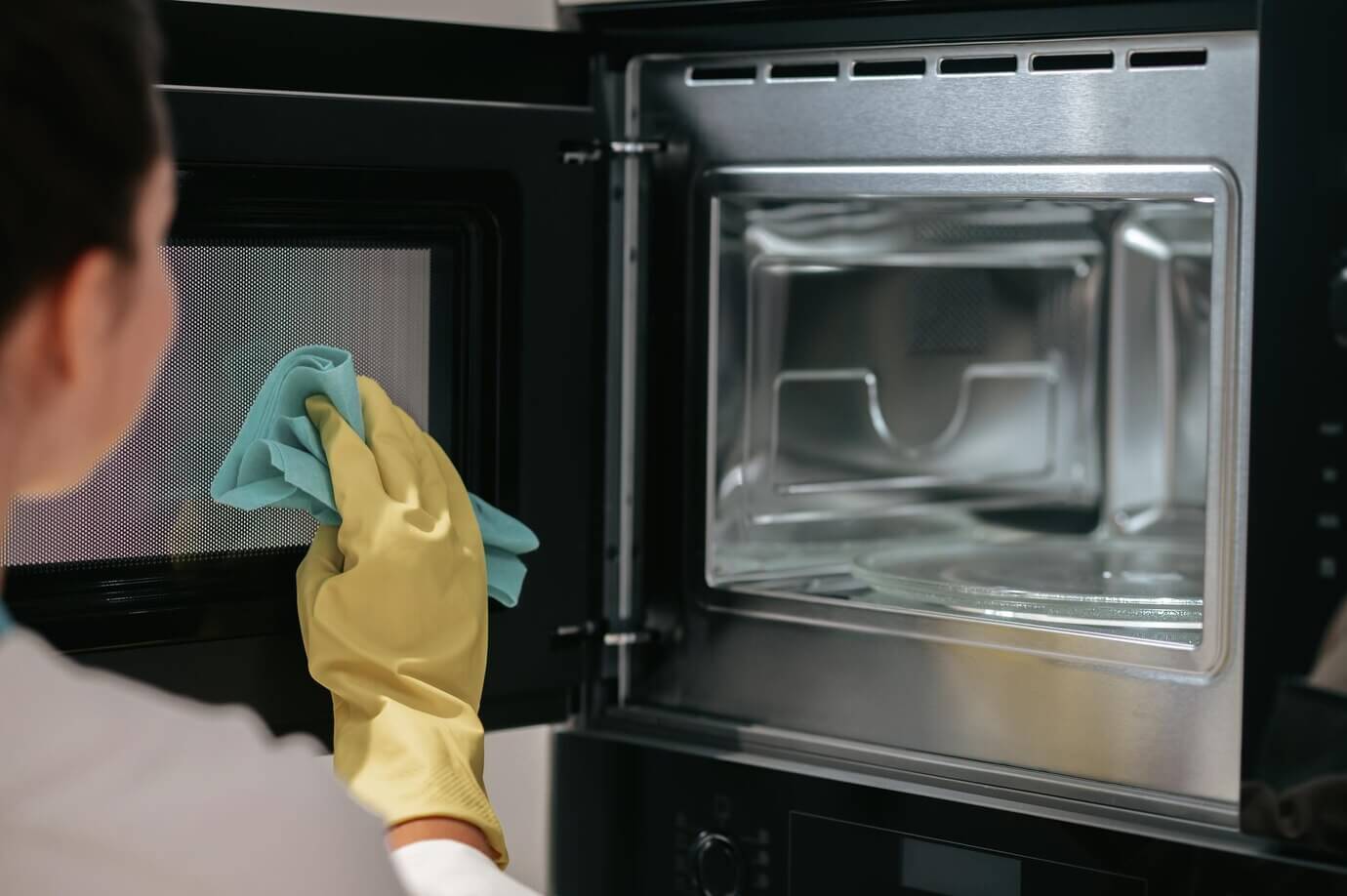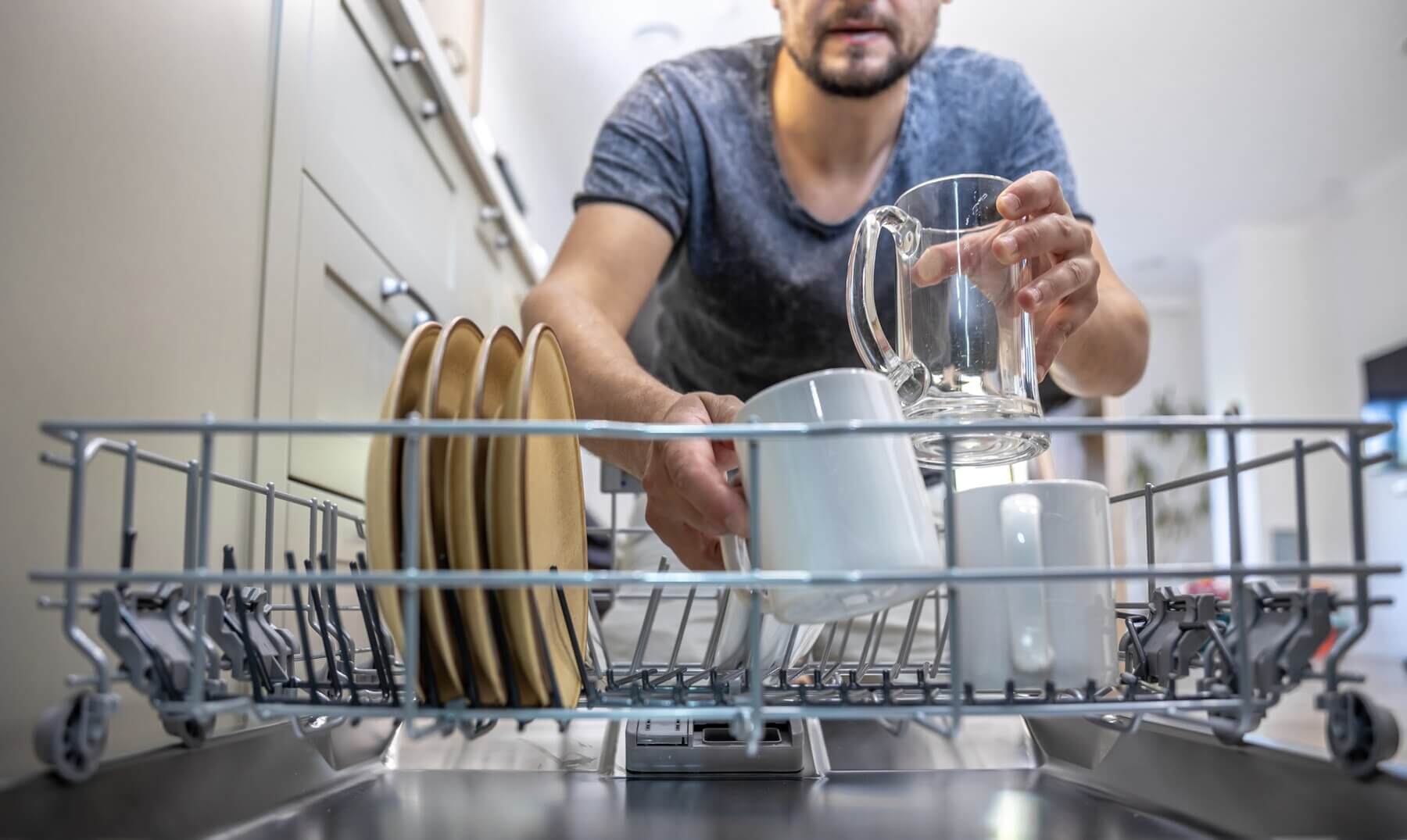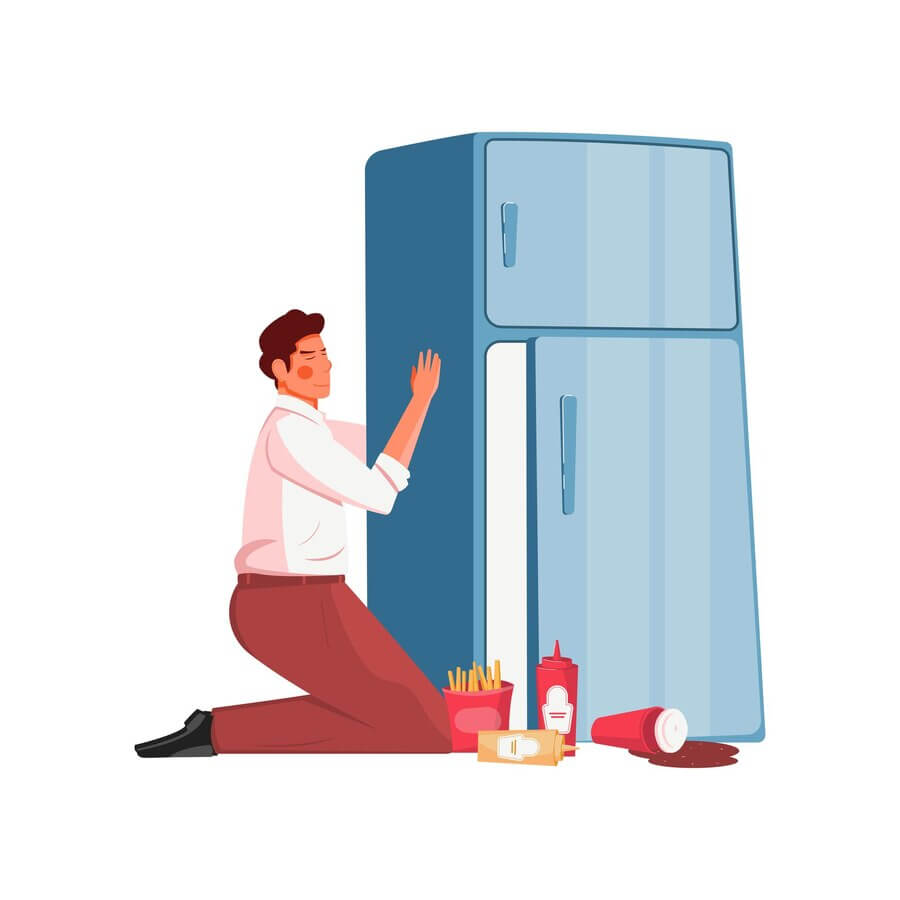
Alright, folks, let’s dive into the heart of every kitchen—the oven. Now, we all know the absolute dread that washes over us when that beloved appliance starts acting up. Your perfectly baked goodies suddenly resemble a culinary disaster, and you’re left wondering, “What in the world is wrong with my oven?” Fear not, my kitchen comrades; we’ve got your back. In this guide, we’re going to unravel the mysteries of malfunctioning ovens, teach you how to become the Sherlock Holmes of the culinary world, and have that appliance singing again like it’s on Broadway.
Before we embark on this troubleshooting adventure, let’s take a moment to appreciate the oven’s crucial role. Picture this: you’re in Brooklyn, New York, preparing a Thanksgiving feast for your hungry crew. The aroma of roasting turkey wafts through the air, making everyone’s stomach growl in anticipation. But hold up! What if your oven decides it’s had enough and throws a tantrum? Disaster, my friend, disaster.
Initial Assessment
So, your oven is throwing a tantrum, and you’re left wondering where to start. Fret not, dear reader; we’ve got a game plan. Before we jump into the technical jargon, let’s ensure we’re playing it safe.
Safety First
Safety goggles on, oven slippers at the ready—let’s make sure we’re not turning this into a kitchen action movie. Here’s a quick safety checklist:
- Power Off the Oven: Before anything else, kill the power. We don’t want any unexpected surprises.
- Wear Protective Gear: Oven mitts are great, but for this adventure, consider safety goggles and gloves. Better safe than sorry.
Visual Inspection
Now that we’re suited up, let’s give your oven the once-over. A visual inspection can reveal a lot about what’s going on under the hood.
What to Look For:
- Visible Damages: Any dents, scratches, or signs of electrical burns? If yes, note them down.
- Power Cord and Plug: Check for frayed wires or any signs of wear. The power cord and plug are the lifelines of your oven.
- Oven Door and Hinges: Is the door closing snugly, or is it hanging on for dear life? Hinges in good shape? Jot it down.
Power Supply Issues
Now that we’ve eyeballed the situation, let’s tackle the first suspect in the lineup—power supply issues.
Testing the Power Outlet
The outlet is the starting point. Is it providing the juice your oven craves?
| Steps | What to Do |
| 1. | Multimeter Check: Grab a multimeter and check the voltage at the outlet. No voltage? Time to investigate. |
| 2. | Breaker and Fuses: Head to your circuit breaker. Any tripped switches or blown fuses? Replace if needed. |
Power Cord and Plug Examination
Next up, the umbilical cord of your oven. Let’s make sure it’s in top-notch condition.
| Steps | What to Look For |
| 1. | Inspect for Damage: Examine the power cord for frayed wires or any visible damage. |
| 2. | Replace Faulty Components: If you spot trouble, don’t be shy—swap out that cord or plug for a new one. |
With the power supply issues out of the way, we’re one step closer to reclaiming your kitchen throne. Strap in, and let’s keep this troubleshooting train chugging along!
Heating Element Problems
Alright, fearless troubleshooters, now that we’ve ensured our oven is powered up and ready for action, let’s zero in on the main culprit when your kitchen dreams turn into baking nightmares—those elusive heating elements.
Oven Not Heating
You preheat, you wait, and yet, your oven remains cold as ice. Fear not, for we’re about to crack the code on this chilling dilemma.
What to Do:
- Inspect the Heating Element: Take a peek inside. Do you see any visible damage or unusual discoloration on the heating element?
- Multimeter to the Rescue: Grab your trusty multimeter and check for continuity. A dead element needs replacing.
Uneven Heating
Ever had a batch of cookies where some are sunbathing while others are in the arctic zone? Uneven heating is a common woe, but fear not—we’ve got a fix.
What to Do:
- Debris Check: Look around the heating element for any rogue crumbs or debris. A clean oven is a happy oven.
- Calibrate Temperature Settings: Time to fine-tune. Check your oven’s user manual for instructions on recalibrating the temperature settings.
By now, you’ve either spotted the sneaky culprit or ruled out the heating element as the miscreant. Onwards, intrepid troubleshooter, there’s more oven magic to uncover.
Temperature Control Issues
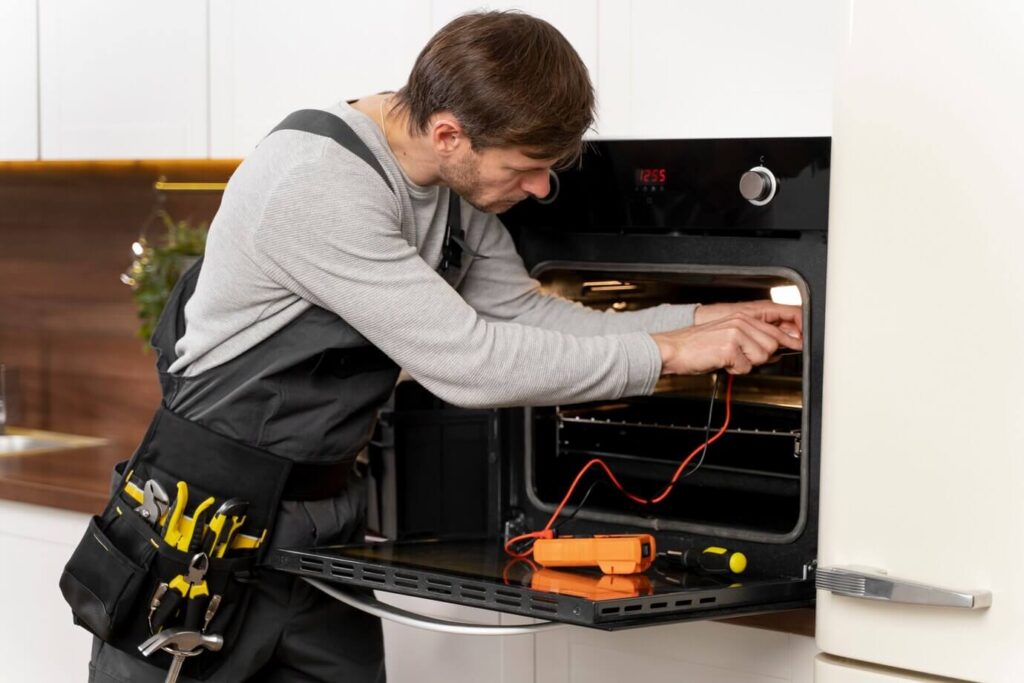
Now that we’ve got the heat flowing, let’s make sure your oven isn’t playing tricks with the temperature. Because, let’s face it, baking is a science, and we need precision.
Inaccurate Temperature Readings
Your recipe says 350°F, but your oven seems to have a mind of its own. Let’s bring it back in line.
What to Do:
- Oven Thermometer Test: Place an oven thermometer inside and cross-check with the displayed temperature. Any discrepancies need addressing.
- Recalibrate the Thermostat: If your oven is playing temperature pranks, consult your manual to recalibrate the thermostat. Precision matters in the kitchen.
Oven Overheating
On the flip side, if your oven seems to be going all Fahrenheit 451 on you, it’s time to rein it in.
What to Do:
- Thermostat Check: Inspect the thermostat for malfunctions. A faulty thermostat can send your oven into overdrive.
- Replace if Necessary: No mercy for a rogue thermostat. If it’s the culprit, it’s time for a replacement.
With your temperature control back in check, you’re well on your way to reclaiming your kitchen throne. Stay tuned, troubleshooters, as we unravel more oven mysteries and ensure your culinary escapades go off without a hitch!
Door and Hinge Troubleshooting
Welcome back, kitchen warriors! We’ve tackled the heat demons, but now it’s time to address another notorious suspect: the oven door and its trusty sidekick, the hinges. If your oven door is playing hard to get or there’s a bit too much heat escaping, fear not—we’re about to tighten those screws.
Door Not Closing Properly
A loose or misaligned oven door can be the sneakiest of culprits, allowing precious heat to escape and leaving your culinary creations in the lurch. Let’s show that door who’s boss.
What to Look For:
- Obstructions in the Door’s Path: Check for anything blocking the door’s smooth closure. A stray baking sheet or a rebellious kitchen towel might be the troublemaker.
- Inspect and Adjust Door Hinges: Hinges feeling a bit wonky? Tighten those screws or, if needed, replace the hinges. A snug door is a happy door.
Leaking Heat
Your oven is meant to keep its cool—well, not literally. If you’re feeling waves of heat escaping, it’s time to put a stop to this thermal jailbreak.
What to Do:
- Replace Damaged or Worn-out Door Gaskets: The gasket is the unsung hero that seals the deal. If it’s worn or damaged, replace it to ensure a proper seal.
- Ensure a Tight Seal: Run your hand around the door’s edges during operation. If you feel heat, you’ve got a leak. Tighten or replace the gasket pronto.
By now, you’ve either fixed the door issues or ruled them out. Well done, troubleshooters! But hold onto your oven mitts; we’ve got more ground to cover.
Control Panel and Electronics
Now that we’ve conquered the physical aspects, it’s time to delve into the digital realm—the control panel and the electronic brains of your oven. If your oven is giving you error codes or playing hard to control, let’s navigate through the tech maze.
Non-Responsive Control Panel
The control panel is your oven’s command center, and when it goes rogue, it’s like the rebel leader walking out on you. Let’s rein it in.
What to Do:
- Check for Loose Connections: A loose wire might be the culprit. Ensure all connections are snug and secure.
- Multimeter Magic: Time to play detective. Use a multimeter to test individual components. A faulty part may need replacing.
Error Codes and Diagnostics
So, your oven is speaking in code, and you’re left scratching your head. Fear not; we’re here to decipher the digital hieroglyphics.
What to Do:
- Refer to the User Manual: Your manual is the Rosetta Stone of oven error codes. Decode the message and follow the instructions for a quick fix.
- Reset the Control Panel: When in doubt, a good old reset might do the trick. Consult your manual for the right buttons to press.
With your control panel back in harmony, you’re on the home stretch. But when is it time to throw in the towel and call for reinforcements? That’s what we’ll tackle next. Stay tuned, troubleshooters, as we wrap up this oven-saving odyssey!
When to Seek Professional Help
You’ve bravely ventured through the trenches of oven troubleshooting, but there comes a time when even the mightiest troubleshooter needs to call in the pros. Let’s navigate the signals that scream, “Bring in the experts!”
Complex Electronic Issues
If your oven seems to have acquired a PhD in electronics and is speaking a language you can’t comprehend, it’s a sign to tap out. Here’s when to surrender:
| Signs | When to Seek Help |
| 1. | Cryptic Error Codes: If the error codes are more mysterious than a spy novel, it’s time for professional translation. |
| 2. | Multimeter Confusion: When the multimeter readings resemble Morse code rather than ohms, it’s a job for the experts. |
Gas Oven Malfunctions
Gas ovens bring a whole new level of complexity, and when they start acting up, safety takes the front seat. Here’s when to hand over the reins:
| Signs | When to Seek Help |
| 1. | Gas Leaks: If you even suspect a gas leak, shut off the supply immediately and call for professional assistance. Safety first! |
| 2. | Pilot Light Woes: If the pilot light is more of a flicker than a flame, it’s time for a professional to handle the gas components. |
Extensive Physical Damage
Sometimes, your oven might resemble a war zone after a particularly fierce battle. If it’s more scrapyard than kitchen, it’s a cue to throw in the towel:
| Signs | When to Seek Help |
| 1. | Beyond Repair: If the damages are so severe that even duct tape is throwing in the towel, it’s time to invest in a new oven. |
| 2. | Safety Hazard: If the damage poses a safety risk, don’t hesitate—call in the pros immediately. |
So, troubleshooters, while we’ve armed you with the knowledge to tackle the common oven adversaries, knowing when to surrender is equally crucial. Now, with your oven either back in action or with the cavalry on the way, let’s wrap up this guide and ensure your kitchen reigns supreme!
Final Words
Congratulations, kitchen champions! You’ve navigated the maze of oven malfunctions, armed with screwdrivers, multimeters, and a dash of determination. As we reach the grand finale of this troubleshooting saga, let’s recap the highlights and leave you with some parting words of wisdom.
Recap of Common Oven Issues and Troubleshooting Steps
| Common Issue | Troubleshooting Steps |
| Power Supply Problems | – Check power outlet with a multimeter. |
| – Inspect power cord for damage. | |
| – Replace faulty components. | |
| Heating Element Woes | – Inspect for visible damage. |
| – Test for continuity with a multimeter. | |
| Temperature Control Hiccups | – Use an oven thermometer for accuracy check. |
| – Recalibrate the thermostat if needed. | |
| Door and Hinge Challenges | – Check for obstructions in the door’s path. |
| – Inspect and adjust door hinges. | |
| Control Panel and Electronics | – Look for loose connections. |
| – Use a multimeter for component testing. | |
| Knowing When to Seek Help | – Professional help for complex electronic issues. |
| – Gas oven problems should be handled by experts. | |
| – Extensive physical damage may require professional attention. |
Importance of Regular Maintenance
Now that you’ve tamed the oven beasts, remember that prevention is the best cure. Regular maintenance can ward off these gremlins, ensuring your oven is always ready for the next culinary adventure.
So, troubleshooters, keep those ovens in tip-top shape, and may your kitchen continue to be the hub of gastronomic delights. If you ever find yourself face-to-face with a stubborn oven foe, don’t hesitate to revisit this guide and reignite that troubleshooting spirit.
As we bid adieu to this oven-saving odyssey, here’s to many more perfectly baked creations and a kitchen that runs as smooth as a well-oiled oven door. Happy cooking!
Frequently Asked Questions (FAQ)
Let’s address some burning questions that may be lingering in the aftermath of our oven-saving adventure. If you’ve got queries, we’ve got answers.
Q1: Why is my oven not heating up?
A: Several reasons could be behind a chilly oven. Start by checking the heating element for damage or testing its continuity with a multimeter. Power supply issues and thermostat malfunctions could also be culprits.
Q2: How do I recalibrate my oven’s thermostat?
A: Consult your oven’s user manual for model-specific instructions. Typically, it involves accessing the control panel settings and adjusting the temperature calibration. It’s like fine-tuning your oven’s musical pitch.
Q3: My oven door isn’t closing properly. What should I do?
A: First, check for any obstructions in the door’s path. If that’s not the issue, inspect and adjust the door hinges. Tighten loose screws or consider replacing the hinges if necessary.
Q4: Can I replace a faulty heating element myself?
A: Absolutely! If you’ve identified a malfunctioning heating element, you can replace it. Just ensure the power is off, and follow your oven’s user manual for guidance. It’s like giving your oven a superhero costume change.
Q5: When should I seek professional help for my oven issues?
A: If you’re dealing with complex electronic problems, gas-related issues, or extensive physical damage, it’s time to call in the professionals. Safety first! Additionally, if troubleshooting becomes overwhelming, professionals can provide a swift solution.
Q6: How often should I perform oven maintenance?
A: Regular oven maintenance is your kitchen’s best friend. Aim for a deep clean every three to six months, checking for wear and tear, loose connections, and other signs of trouble. It’s like giving your oven a spa day to keep it in peak performance.
Q7: My oven is displaying error codes. What do they mean?
A: Decode the cryptic messages by referring to your oven’s user manual. Each error code corresponds to a specific issue, and the manual will guide you on how to address it. Think of it as deciphering your oven’s secret language.
Feel free to revisit this FAQ if you ever find yourself in another oven-related quandary. Happy troubleshooting!



